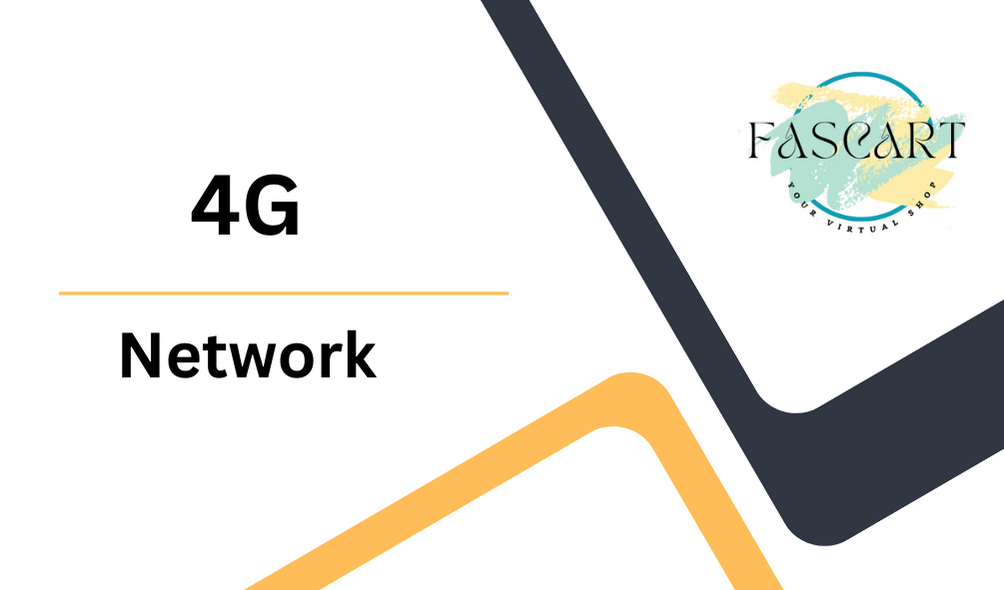The term “4G” stands for fourth generation, referring to the fourth generation of mobile telecommunications technology. 4G networks represent a significant advancement over 3G, offering higher data speeds, improved reliability, and enhanced capabilities for mobile communication and data services.
Here are some key features and characteristics of 4G networks-
High Data Speeds: 4G networks are designed to deliver significantly faster data transfer speeds compared to 3G. The International Telecommunication Union (ITU) established a minimum peak download speed of 100 megabits per second (Mbps) for 4G, with some implementations providing even higher speeds.
Low Latency: 4G networks aim to minimize latency, which is the delay between the initiation of a data transfer and the actual transfer of data. Low latency is crucial for real-time applications like online gaming, video conferencing, and other interactive services.
Advanced Multimedia Support: 4G networks support high-quality multimedia services, including high-definition video streaming, online gaming, and other data-intensive applications.
IP-Based Network: 4G networks are based on an all-IP (Internet Protocol) architecture, providing a seamless integration with the internet and enabling a wide range of internet-based services.
LTE (Long-Term Evolution) Technology: LTE is a key technology used in many 4G networks. It provides a standardized framework for high-speed wireless communication and has become a common global standard for 4G deployment.
Increased Capacity and Spectral Efficiency: 4G networks offer improved capacity, allowing them to handle a larger number of simultaneous users and devices. They also provide greater spectral efficiency, enabling more data to be transmitted over the available frequency spectrum.
Smartphones and Mobile Broadband: 4G networks have played a crucial role in the widespread adoption of smartphones and the growth of mobile broadband services. Users can enjoy faster internet browsing, smoother video streaming, and a better overall mobile experience.
Transition to VoLTE: While 3G networks often used separate networks for voice (circuit-switched) and data (packet-switched), 4G networks introduced Voice over LTE (VoLTE), allowing voice calls to be transmitted over the data network.
4G नेटवर्क (4th Generation Network) एक और उच्च गति का मोबाइल टेलीकम्यूनिकेशन नेटवर्क है, जो 3G को अग्रणीता देने के लिए डिज़ाइन किया गया है। यह तकनीक LTE (Long-Term Evolution) और WiMAX के माध्यम से प्रदान की जाती है।
4G नेटवर्क के कुछ मुख्य विशेषताएँ शामिल हैं:
उच्च डेटा स्पीड: 4G नेटवर्क उच्च गति और डेटा स्पीड प्रदान करता है, जिससे उपयोगकर्ता वीडियो स्ट्रीमिंग, ऑनलाइन गेमिंग, फ़ास्ट डाउनलोड , और अन्य डेटा इंटेंसिव गतिविधाओं का आनंद ले सकते हैं।
सुपीरियर नेटवर्क कवरेज: 4G नेटवर्क की कवरेज और नेटवर्क स्थिरता में सुधार होती है, जिससे उपयोगकर्ता अधिक स्थानों पर उच्च गति का आनंद ले सकते हैं।
HD वीडियो कॉलिंग: 4G नेटवर्क ने उच्च गति में HD वीडियो कलिंग की सुविधा प्रदान की है, जिससे उपयोगकर्ता एक दूसरे के साथ बेहतरीन गुणवत्ता में वीडियो कॉल कर सकते हैं।
लोट ऑफ इंटरनेट ऑफ़ थिंग्स (IoT) समर्थन: 4G नेटवर्क ने लोट ऑफ इंटरनेट ऑफ़ थिंग्स (IoT) डिवाइसेस के समर्थन को बढ़ावा दिया है, जिससे विभिन्न संबंधित डिवाइसेस एक-दूसरे के साथ संवाद कर सकते हैं।
बेहतर सुरक्षा और गोपनीयता: 4G नेटवर्क में उच्च स्तर की सुरक्षा और गोपनीयता सुनिश्चित की जाती है, जिससे उपयोगकर्ता की जानकारी सुरक्षित रहती है।
4G नेटवर्क ने मोबाइल इंटरनेट अनुभव को महसूस कराया है और विभिन्न ऑनलाइन सेवाओं को सुविधाजनक बनाने में मदद की है।





